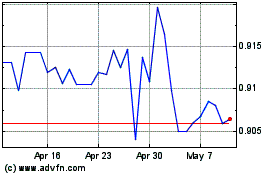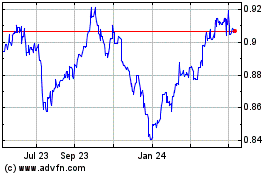ADB Retains Developing Asia's Growth Outlook
September 27 2016 - 12:04AM
RTTF2
Developing Asia is set to grow robustly, underpinned by the
strong performance by China and India, despite external pressures,
the Asian Development Bank said Tuesday as it retained its growth
projection for the region.
Gross domestic product of developing Asia is forecast to grow
5.7 percent each in 2016 and 2017, as estimated in March, the
Manila-based lender said in its latest the Asian Development
Outlook.
The ADB noted that risks to the outlook remain tilted to the
downside, with the external environment still fragile and the
possibility of a US Federal Reserve Rate hike leaving open the
potential for disruptive capital flows that could complicate
macroeconomic policy management in the region.
In the update of its flagship annual economic publication, the
ADB raised its growth outlook for China, citing
stronger-than-expected growth in the region driven by fiscal and
monetary stimulus.
China was forecast to grow 6.6 percent this year and 6.4 percent
next year, suggesting an upward revision of 0.1 percentage points
for both this year and next.
India's growth forecast for this fiscal year ending March 2017
was left unchanged at 7.4 percent, supported by strong private
consumption. Moreover, the milestone tax reform passed this year
and progress in restructuring bank balance sheets should help
revive investment and propel growth of 7.8 percent next fiscal
year, the ADB said.
"Strong growth in the PRC and India is helping the region
maintain its growth momentum," said Juzhong Zhuang, ADB deputy
chief economist.
"Still, policymakers need to watch for downside risks including
potential capital reversals that could be triggered by monetary
policy changes in advanced economies, especially the US."
Driven by India, South Asia was forecast to retain its rapid
growth with GDP rising 6.9 percent this year and 7.3 percent next
year, unchanged from the March forecasts.
At the same time, Southeast Asian economies will see growth edge
up to 4.5 percent this year on the back of robust government
infrastructure investment, supported by strong performances from
the Philippines and Thailand, the lender said.
Due to depressed oil and gas prices, low foreign demand and
lower remittances, Central Asian economies are forecast to remain
under pressure. Growth for the sub-region was revised down to 1.5
percent from 2.1 percent for 2016. But the rate is expected to pick
up to 2.6 percent next year.
Meanwhile, the Pacific sub-region will post softer growth than
previously projected, with growth forecast at 2.7 percent in 2016
compared to the earlier outlook of 3.8 percent, the ADB said.
US Dollar vs CHF (FX:USDCHF)
Forex Chart
From Mar 2024 to Apr 2024

US Dollar vs CHF (FX:USDCHF)
Forex Chart
From Apr 2023 to Apr 2024
